Disclosure: This article contains affiliate links. We may earn a commission from purchases at no extra cost to you, which helps our travel content.
The first time I laid eyes on Lençóis Maranhenses, I genuinely thought someone had photoshopped the landscape. Vast stretches of blindingly white sand dunes cradle thousands of turquoise and emerald lagoons that appear like a mirage in this otherworldly corner of northeastern Brazil. As someone who's documented monastery architecture from the Himalayas to the Balkans, I'm not easily rendered speechless by landscapes – but this place defies logic and expectation. It's a photographer's dream and nightmare simultaneously: visually stunning beyond belief yet technically challenging to capture. After three visits over the past decade (most recently last summer), I've finally cracked the code to photographing this shape-shifting paradise. This guide distills everything I've learned about timing, equipment, techniques, and access points that will help you create images worthy of this surreal ecosystem.
Understanding the Landscape & Seasonal Rhythms
Lençóis Maranhenses isn't technically a desert, despite appearances. This 1,500-square-kilometer national park receives about 47 inches of rainfall annually, concentrated between January and July. The rain collects in the valleys between dunes, forming thousands of temporary lagoons that reach their peak between July and September before gradually evaporating.
What makes this ecosystem photographically fascinating is its constant evolution. Visit in June, and you'll find deep, full lagoons with dramatic contrast against the white sand. Return in November, and many will have transformed into shallow pools or disappeared entirely, while the dune formations themselves will have shifted with the winds.
For photographers, this means research is essential. I use satellite imagery before each visit to understand current conditions. My go-to tool is the Garmin inReach Mini which not only provides safety in these remote areas but allows me to download updated maps and mark GPS coordinates of promising locations.
The interplay between water and sand creates fascinating compositional opportunities throughout the year. Early in the wet season, rain patterns create intricate ripples and textures in the sand. During peak lagoon season, the blue-green waters provide perfect reflections and contrast. As waters recede, the exposed sand reveals fascinating patterns and occasionally algae creates red or pink hues in the remaining pools.
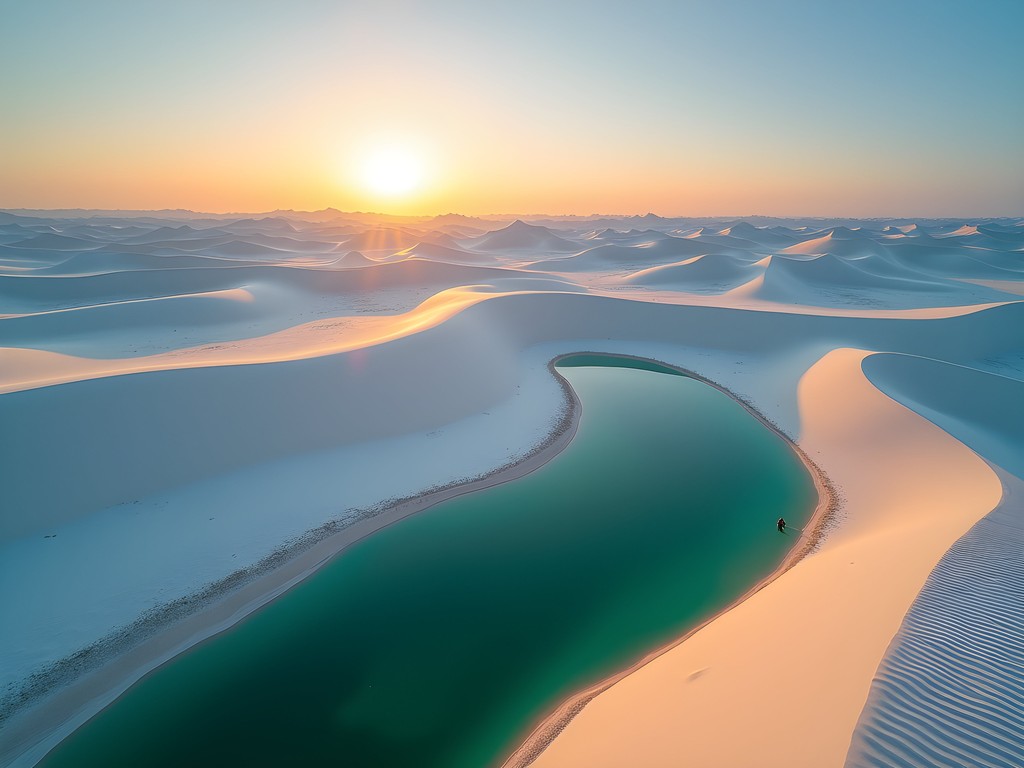
💡 Pro Tips
- Research seasonal water levels before booking your trip - July/August typically offers the fullest lagoons
- Download offline maps of recent satellite imagery to track changes in lagoon formations
- Visit the same locations at different times of day - the changing light completely transforms the landscape
Essential Photography Gear for the Dunes
The Lençóis Maranhenses environment presents unique challenges for photographers. The combination of blinding white sand, harsh sunlight, and potentially wet conditions requires specific gear considerations.
First, let's talk about camera protection. Sand is your equipment's worst enemy here. I learned this lesson the hard way during my first visit when my primary lens developed a concerning grinding sound after just two days. Now I always bring my camera rain cover which works equally well for sand protection. For lens changes, I bring a small pop-up changing tent that creates a sand-free environment.
For lenses, I recommend a versatile trio: a wide-angle (16-35mm) for capturing the vast dune landscapes, a standard zoom (24-70mm) for general shooting, and a telephoto (70-200mm) for compressing dune formations and creating abstract patterns. The telephoto becomes particularly valuable for shooting distant lagoons when walking through deep sand becomes exhausting.
Filters are non-negotiable in this environment. A polarizer cuts glare from the water and intensifies the lagoon colors, while graduated ND filters help balance the extreme brightness difference between sand and sky. I also pack several neutral density filters for long exposures that capture the subtle movement of clouds reflected in the still lagoons.
Tripods present a dilemma – they're essential for low-light shooting but cumbersome in deep sand. After experimenting with various options, I now use a carbon fiber model with wide feet attachments that prevent sinking. When weight is a concern for longer hikes, my travel tripod offers the perfect balance of stability and portability.
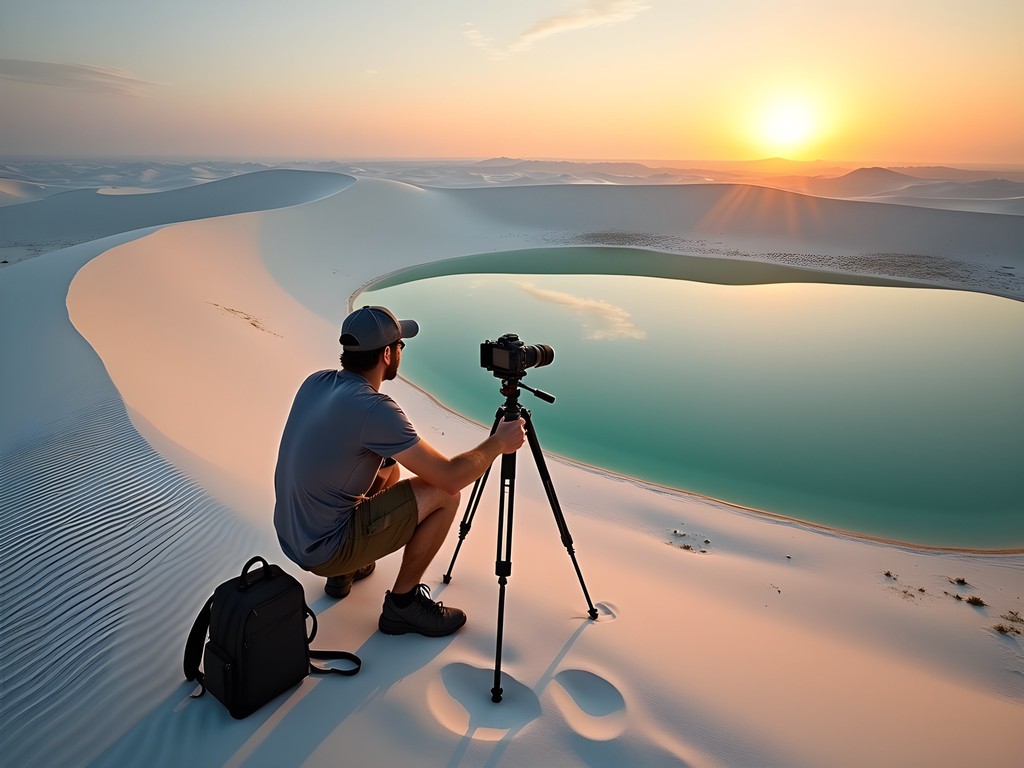
💡 Pro Tips
- Bring twice as many microfiber cloths as you think you'll need - sand and moisture make cleaning a constant necessity
- Use gaffer tape to seal vulnerable parts of your camera where sand might enter
- Pack a rocket blower for daily sensor cleaning - the fine sand particles are impossible to avoid completely
Mastering Light in an Extreme Environment
The light in Lençóis Maranhenses is unlike anywhere else I've photographed. The combination of reflective white sand and water creates challenging conditions that require technical knowledge to overcome – but also offers extraordinary creative possibilities.
The golden hours here are truly magical but extremely brief. The transition from harsh daylight to soft golden light happens rapidly, giving you perhaps 30-45 minutes of prime shooting conditions. I've found that being on location at least an hour before sunset allows time to scout compositions and be ready when the light transforms.
During my last visit, I experimented extensively with shooting directly into the sun as it neared the horizon. The results were spectacular: backlit dune ridges glowing with translucent edges, lagoons transformed into mirrors of liquid gold. To manage the extreme dynamic range, I bracket my exposures (3-5 shots at different settings) and blend them later in post-processing.
Night photography presents another dimension entirely. The lack of light pollution makes Lençóis Maranhenses an excellent location for astrophotography, with the Milky Way reflecting in the lagoons creating otherworldly scenes. For these shots, I use my fast wide-angle lens which gathers enough light for the stars while capturing the expansive landscape.
Midday shooting, though typically avoided by landscape photographers, offers unique opportunities here. The harsh overhead light creates dramatic shadows and textures on the dunes, particularly when using a polarizer to enhance the contrast between wet and dry sand. For these conditions, I often convert images to black and white in post-processing, emphasizing the sculptural quality of the landscape.
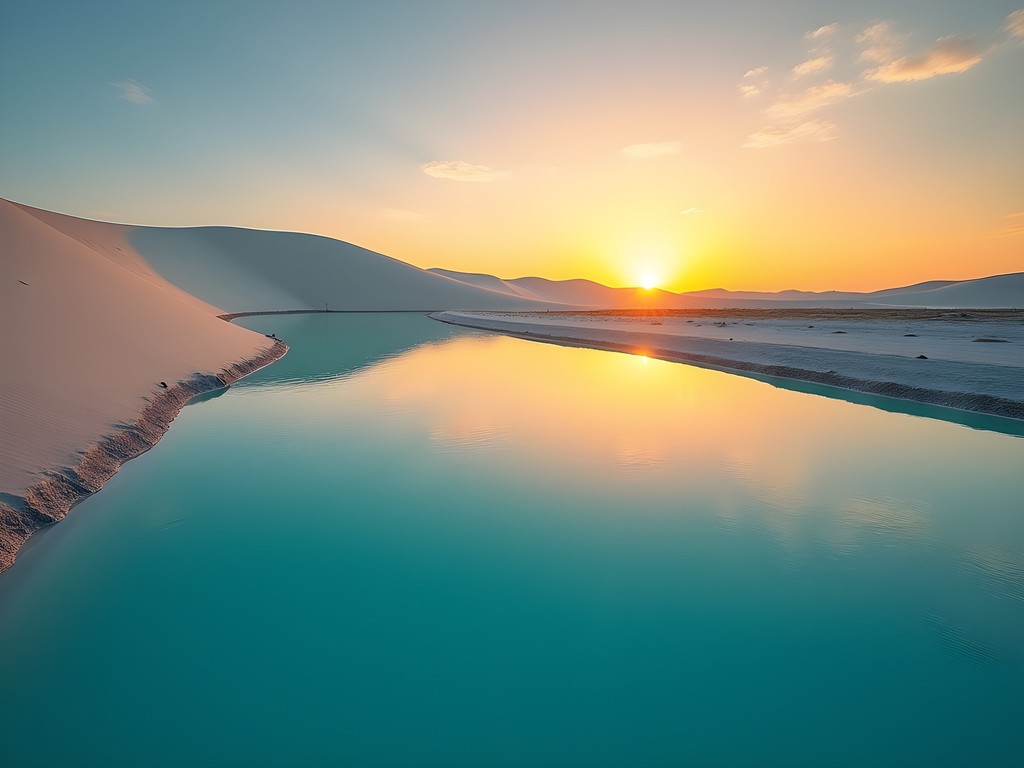
💡 Pro Tips
- Arrive at your chosen location at least 45 minutes before sunset to scout compositions and be ready when the light changes
- Use the PhotoPills app to track sun and moon positions for planning your shots
- For night photography, bring a powerful headlamp with a red light mode to preserve your night vision while navigating between dunes
Navigation & Access: Finding the Perfect Shots
The most photogenic lagoons aren't necessarily the easiest to reach. After three visits, I've developed strategies for accessing the best locations while navigating this challenging terrain.
Barreirinhas serves as the main gateway to the park, but I've found that basing myself in Santo Amaro provides access to less-visited sections with equally stunning vistas. The small village of Atins, reachable by 4x4 or boat, offers the closest accommodation to some of the most photogenic eastern lagoons.
For serious photographers, I recommend hiring a local guide with photography experience. During my last visit, I worked with Paulo from Santo Amaro, who understood exactly what I was looking for – not just the postcard views, but unique perspectives and pristine dunes without footprints. Most importantly, he knew precisely when certain lagoons would catch the best light.
Navigating between lagoons requires preparation. The sand is exhausting to walk in, temperatures can soar, and landmarks are few. I track all my movements using my GPS watch which has proven invaluable for finding my way back after chasing the perfect light until dusk. Its solar charging capability means I never worry about battery life during long days in the field.
For those with limited time, focus on the Lagoa Azul and Lagoa Bonita circuit from Barreirinhas, or the Lagoa da Gaivota area from Santo Amaro. If you can dedicate 3+ days, the remote eastern section near Atins offers the most pristine photographic opportunities, including my favorite location – Lagoa do Peixe – where the dune formations create perfect leading lines toward the horizon.

💡 Pro Tips
- Book a guide who specifically understands photographers' needs - they should know about light conditions and be willing to visit locations at odd hours
- Mark your accommodation's GPS coordinates before heading out - dune landscapes can be disorienting
- Bring twice as much water as you think you'll need - the combination of heat and walking in sand increases consumption dramatically
Post-Processing Techniques for Dune & Lagoon Photography
The unique visual characteristics of Lençóis Maranhenses require specific post-processing approaches to accurately convey what you experienced. After experimenting with various techniques over my three visits, I've refined a workflow that maintains authenticity while enhancing the natural drama of this landscape.
The extreme brightness range presents the biggest challenge. I typically bracket exposures in the field, then blend them using luminosity masks in Photoshop. This preserves both the brilliant white of the sand and the deep blues of the lagoons without creating an artificial HDR look. For those newer to advanced blending techniques, I recommend starting with Adobe Lightroom's HDR merge function, which has improved significantly in recent versions.
Color calibration is crucial for lagoon photography. The water colors in Lençóis Maranhenses range from deep turquoise to emerald green depending on algae concentration and depth. I've found that slightly reducing saturation while increasing vibrance creates a more natural representation of these colors, which can otherwise appear artificially intense in digital captures.
For the most compelling images, I carefully adjust clarity and texture to enhance the ripple patterns in the sand without creating an over-processed appearance. The key is applying these adjustments selectively using radial or gradient filters rather than globally across the entire image.
My editing workflow relies heavily on my calibrated monitor which ensures I'm seeing accurate colors and tones. When editing Lençóis images specifically, I reduce my monitor brightness to about 80% of normal to better evaluate the bright sand areas, which helps prevent over-processing these challenging highlights.
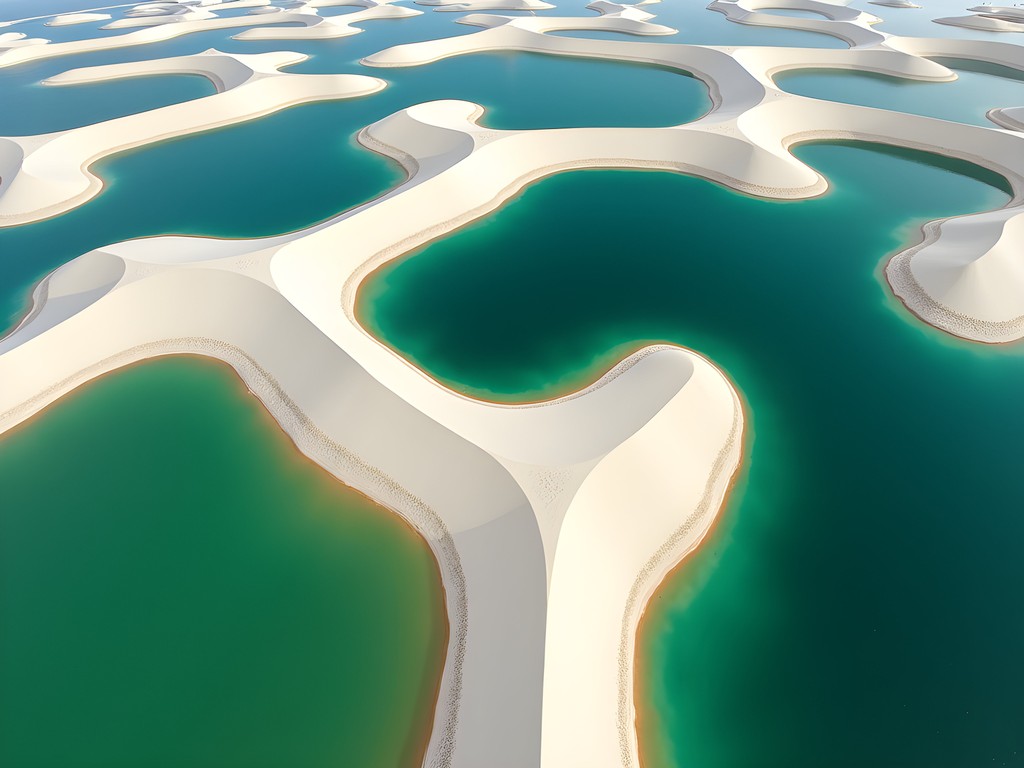
💡 Pro Tips
- Create a custom camera profile specifically for Lençóis conditions - the unique light qualities benefit from tailored color rendering
- Use luminosity masks to selectively enhance the blue of the lagoons without affecting the white balance of the sand
- When processing night photography, reduce noise selectively - apply heavier noise reduction to water areas while preserving detail in the sand textures
Final Thoughts
Photographing Lençóis Maranhenses has taught me as much about patience and adaptability as it has about technical skills. This landscape demands respect – for its challenging conditions, its fragile ecosystem, and its ephemeral nature. The images you create here will be unlike anything else in your portfolio, but they require preparation, the right equipment, and a willingness to embrace the unexpected. The lagoon you scouted yesterday may appear completely different today as winds reshape the dunes overnight. Rather than fighting these changes, I've learned to incorporate them into my creative process, allowing the landscape to guide my compositions. Whether you're drawn to grand vistas, intimate details, or abstract patterns, Lençóis Maranhenses offers endless possibilities for the prepared photographer. I hope this guide helps you capture your own interpretation of this extraordinary place – and remember that sometimes the most compelling images come when you put down the camera for a moment and simply absorb the surreal beauty surrounding you.
✨ Key Takeaways
- The best photography conditions occur during July-September when lagoons are fullest and most colorful
- Protective gear for your camera is essential due to the challenging combination of sand, water and bright conditions
- Early morning and late afternoon provide the most dramatic lighting for dune photography
- Local guides who understand photographers' needs are invaluable for finding pristine locations
📋 Practical Information
Best Time to Visit
July to September for fullest lagoons
Budget Estimate
$100-150/day including accommodation, guide and transportation
Recommended Duration
5-7 days
Difficulty Level
Moderate

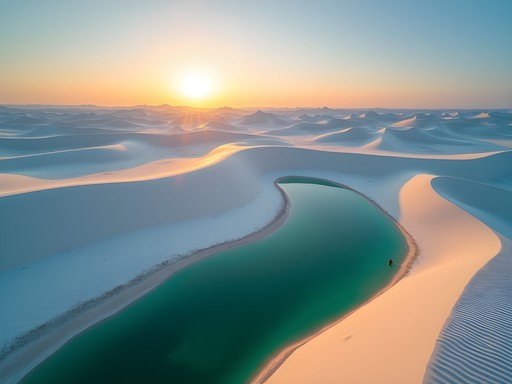
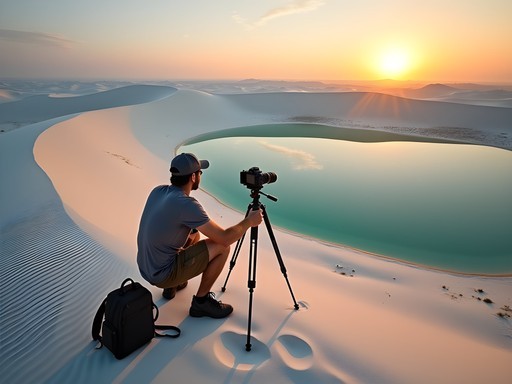


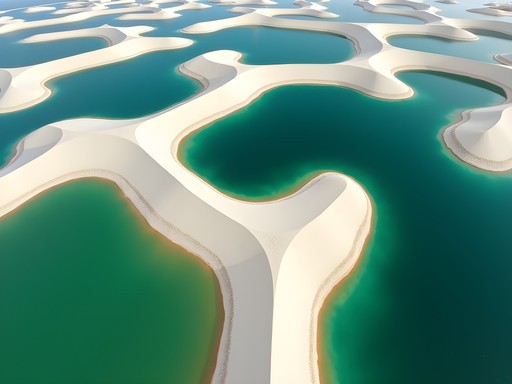









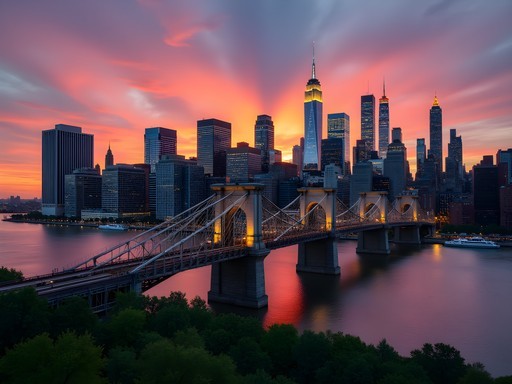
Comments
coolphotographer
Great guide! I'm heading there in three months and wondering about footwear. What did you wear while hiking the dunes? Regular hiking boots seem like they'd fill with sand instantly. Also, did you find it difficult to keep your gear protected from sand/water while shooting?
dreamwalker
Not OP but when I went I just went barefoot most of the time! The sand isn't hot like beach sand since it's so white and reflective. Just watch for occasional thorny plants.
nomadwanderer
Just added this to my bucket list! Those blue lagoons are unreal!
Sarah Powell
Evelyn, this is probably the most comprehensive photography guide I've seen for Lençóis Maranhenses! Your section on mastering the extreme light conditions saved my shoot last month. The midday sun there is brutal, but I found my polarizing filter absolutely essential for managing reflections on the water. One thing I'd add for photographers - bring more memory cards than you think you'll need. I shot over 2000 images in just three days! The changing light on the dunes creates new compositions every minute. Did you explore the less-visited eastern section? I found some pristine lagoons there with almost no footprints.
dreammaster
This place looks incredible! I'm planning a trip for early next year but unsure about timing. When exactly do the lagoons fill up? I want to make sure I don't arrive when they're dry. Also, did you hire a guide or is it possible to explore independently? Thanks for the amazing guide!
Sarah Powell
Not the author, but I've been twice - the lagoons typically fill between February and September, with peak water levels around May-July. Definitely hire a local guide - the dunes can be disorienting and a guide will know which lagoons are most photogenic during your visit time. The ones closer to Barreirinhas fill up first, while the more remote ones near Santo Amaro can have different water levels.
dreammaster
Thanks so much Sarah! That's super helpful. Looks like I'll aim for May then!
Marco Flores
Incredible guide, Evelyn! I visited Lençóis last year during May and it was transformative. The contrast between the white dunes and blue lagoons is even more dramatic in person. One tip I'd add - for those wanting to capture the reflections in the lagoons, try visiting just after a light rain when the water is completely still. I spent three days hiking different sections and found the Lagoa Azul area particularly photogenic at sunset. Did you experience any challenges with sand getting into your equipment? I ended up wrapping my camera in plastic bags during transit between shooting spots!
coolphotographer
Did you bring multiple lenses or just stick with one? Worried about changing lenses in all that sand!
Marco Flores
I mainly used my 24-70mm and rarely changed lenses in the open. When I did need to switch, I would do it inside a large ziplock bag or in the vehicle. The sand is so fine there, it gets everywhere!
dreamwalker
These photos are absolutely stunning! Looks like another planet!
Douglas Bradley
Excellent guide, Evelyn. Your section on navigation is particularly valuable. I'd add that for serious photographers, it's worth hiring a local guide for multiple days rather than joining the standard tours. This allows you to revisit locations at different times and reach some of the more remote lagoons that tour groups skip. I spent three days with a guide named Carlos from Barreirinhas who knew exactly when certain dunes would create perfect leading lines to specific lagoons. The extra expense was worth every penny for the unique compositions I captured. Also appreciated your emphasis on environmental respect - the ecosystem there is far more fragile than most visitors realize.
Evelyn Rogers
Great point about the private guide, Douglas! I actually met Carlos too - he's a wealth of knowledge. And you're right about the environmental fragility. I saw too many tourists trampling vegetation around the lagoon edges for that 'perfect shot'.
globemate
This place just shot to the top of my bucket list!!! Those blue lagoons against white sand - WOW! Is September still a good time to visit or are the lagoons dried up by then?
Douglas Bradley
Not Evelyn, but I've been tracking seasonal patterns there for a photography project. September is actually transitional - some lagoons will be starting to shrink but the most reliable ones (especially in the Lagoa Azul area) should still have water. The blues get more concentrated as they shrink, which can make for stunning photos. Just don't wait until October/November when most are dry.
globemate
Thanks Douglas! That's super helpful. September it is!
bluepro
Great guide, Evelyn! I was there last year and can confirm that timing is EVERYTHING. We went in June when the lagoons were full but not too many tourists. One thing I'd add - bring twice as much protection for your gear as you think you need. That fine sand gets EVERYWHERE. I used my camera rain cover even though it wasn't raining, just to keep the sand out of my camera body. Saved my equipment for sure. Your tip about the golden hour is spot on - those dunes create amazing shadows!
globemate
Did you find it hard to hike through the dunes with all your camera gear? Planning a trip for next season!
bluepro
It's definitely a workout! I limited myself to one camera body, three lenses and a tripod. Anything more would've been torture in that heat. Bring a lightweight backpack and lots of water!
waveway
Those lagoon shots are incredible! Almost doesn't look real. Did you use any special filters?
Evelyn Rogers
Thanks waveway! Just a polarizing filter to cut glare from the water and enhance those blue tones. The landscape does most of the work honestly!
waveway
Good to know! Adding a polarizer to my shopping list before my trip.
Venture X
Premium card with 2X miles, $300 travel credit, Priority Pass